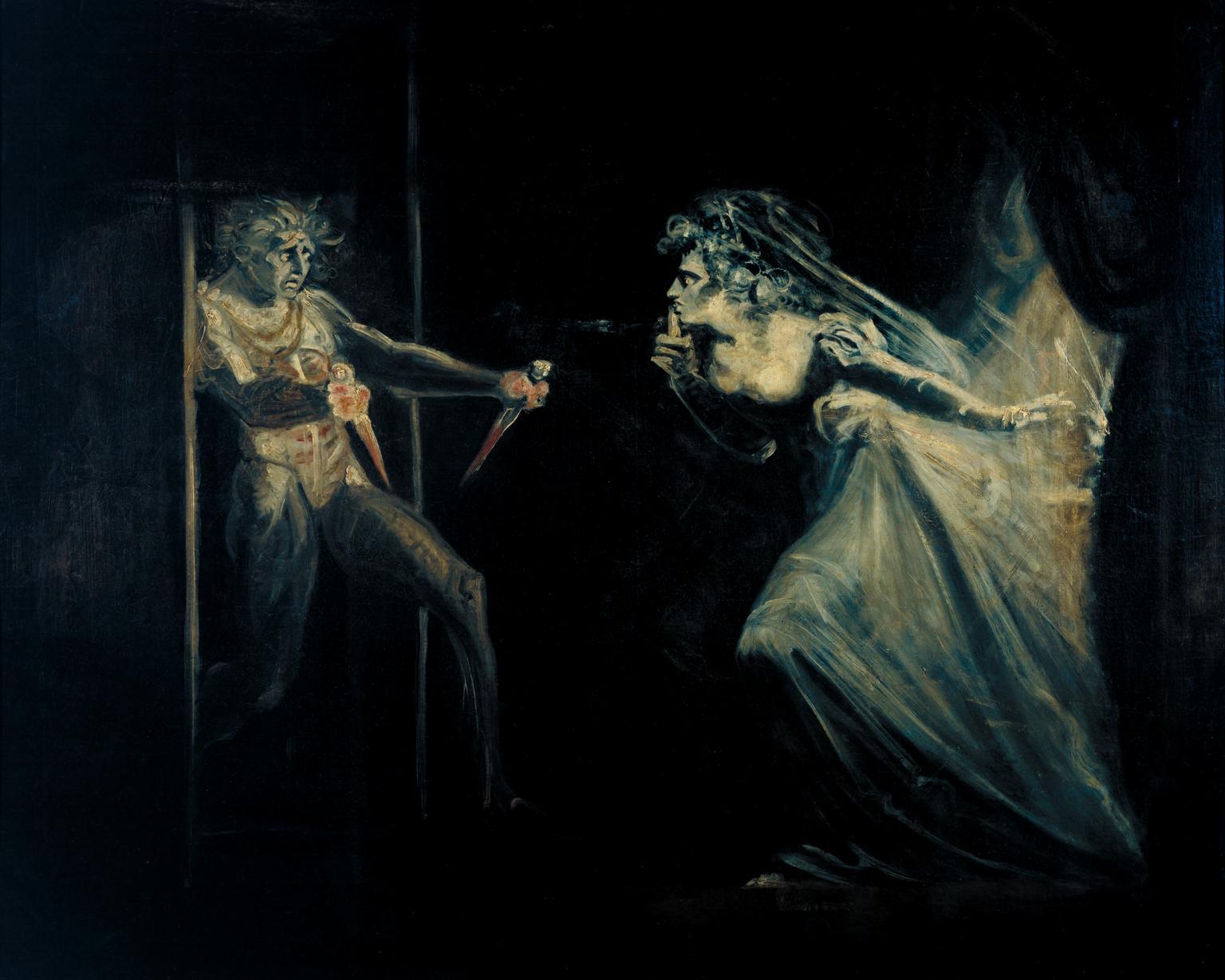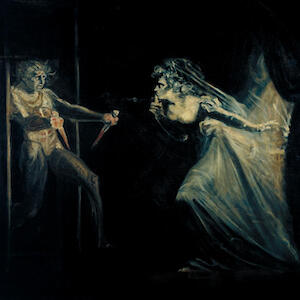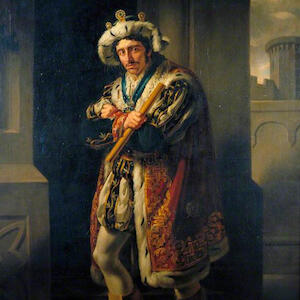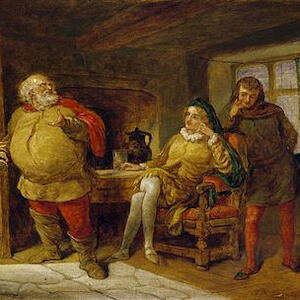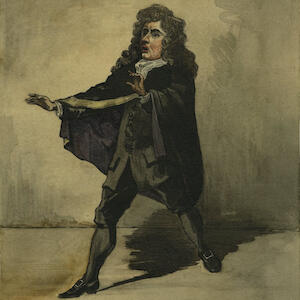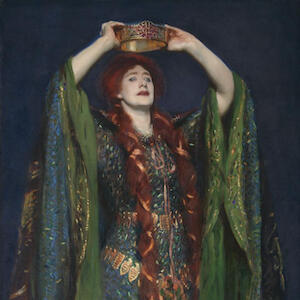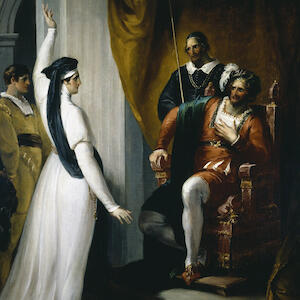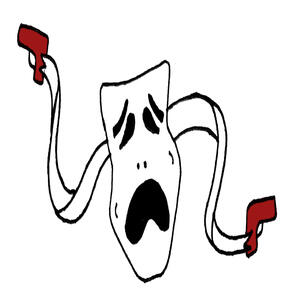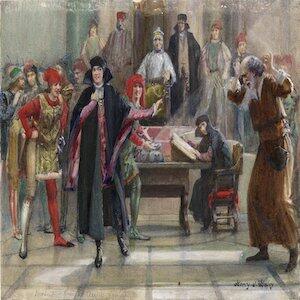Agnew, R. (1992). Foundations for a general strain theory of crime and delinquency. Criminology, 30(1), 47-88.
Agozino, B. (1995). Radical criminology in African literature. International Sociology, 10(3), 315-29.
Alshiban, Afra Saleh. “Exploring Criminology in Literary Texts: Robert Browning - An Example.” Journal of Literature and Art Studies, vol. 2, no. 4, 2012, pp. 454-63.
Appleby, J.C., & Dalton, P. (Eds.). (2009). Outlaws in medieval and early modern England: Crime, government and society, c.1066–c.1600. Ashgate.
Baker, N. V., Gregware, P. R., & Cassidy, M. A. (1999). Family killing fields: Honor rationales in the murder of women. Violence Against Women, 5(2), 164-84.
Bandura, A. (1979). The social learning perspective: Mechanisms of aggression. In H. Toch (Ed.), The psychology of crime and criminal justice (pp. 198-236). New York, NY: Holt, Rinehart, & Winston.
Bates, L. R. (2003). The uses of Shakespeare in criminal rehabilitation: Testing the limits of ‘universality’. In L. Davis (Ed.), Shakespeare matters: History, teaching, performance (pp. 151-64). Newark: University of Delaware Press.
Bates, L.R. (2013). Shakespeare saved my life: Ten years in solitary with the bard. Sourcebooks.
Beccaria, C. (1764/1995). On crimes and punishments. (Richard Davies and Virginia Cox, Trans. Richard Bellamy, Ed.). Cambridge, UK: Cambridge University Press.
Becker, H. (1963). Outsiders. In Outsiders: Studies in the sociology of deviance (pp. 1-18). New York, NY: The Free Press of Glencoe.
Bentham, J. (1970). Of the principle of utility. In J. H. Burns and H. L. A. Hart (Eds.), An introduction to the principles of morals and legislation (pp. 11-16). London, England: Athlone Press.
Bernthal, C. A. (1992). Staging justice: James I and the trial scenes of Measure for Measure. Studies in English Literature, 32, 247-69.
Bonn, S. (2012). The social construction of Iraqi folk devils: Post-9/11 framing by the G.W. Bush administration and US news media. In G. Morgan and S. Poynting (Eds.), Global Islamophobia: Muslims and moral panic in the West(pp. 83-101). New York, NY: Ashgate.
Bowers, F. (1955). Hamlet as minister and scourge. Publications of the Modern Language Association, 70, 140-49.
Bowman, Blythe Alison. “Classical Literature for the Criminal Justice Classroom.” Journal of Criminal Justice Education, vol. 20, no. 1, 2009, pp. 95-109.
Broude, R. (1975). Revenge and revenge tragedy in Renaissance England. Renaissance Quarterly, 28, 38-58.
Brownmiller, S. (1975). The mass psychology of rape: An introduction. In Against our will: Men, women, and rape(pp.11-15). New York, NY: Ballantine Books.
Burney, Elizabeth. “Crime and Criminology in the Eye of the Novelist: Trends in Nineteenth Century Literature.” Howard Journal of Criminal Justice, vol. 51, no. 2, 2012, pp. 160-72.
Carr, J. (2012). Harassment, exploitation, and rape: Sexual offences in Measure for Measure and All’s Well That Ends Well. MP: An Online Feminist Journal 3(5), 69-81.
Charles, B. (2013, Feb. 8). PTSD: A Factor in Ex-Cop Christopher Dorner’s Rampage? Los Angeles Daily News. Retrieved from http://www.dailynews.com
Classen, A., & Scarborough, C. (Eds.). (2012). Crime and punishment in the middle ages and early modern age: Mental-historical investigations of basic human problems and social responses. De Gruyter.
Cohen, S. (1972). Deviance and moral panics. In Folk devils and moral panics: The creation of the mods and rockers (pp. 1-15). London, England: MacGibbon and Kee.
Cooley, C. H. (1902). The meaning of ‘I’. In Human nature and the social order (pp. 136-78). New York, NY: C. Scribner's Sons.
Cormack, B., Nussbaum, M. C., & Strier, R. (Eds.). (2013). Shakespeare and the law: A conversation among disciplines and professions. University of Chicago Press.
Couche, C. (2010). A mind diseased: Reading Lady Macbeth’s madness. In P. Kelly & L. E. Semler (Ed.), Word and self estranged in English texts 1550-1660 (pp. 135-50). Aldershot, England: Ashgate.
Curran, K. (2012). Feeling criminal in Macbeth. Criticism, 54(3), 391-401
Dagan, David. “The Baltimore Cops Studying Plato and James Baldwin.” The Atlantic, 25 Nov. 2017.
Demko, P. (2012, Oct. 5). ‘He was a kid’: Former juvenile sex offenders languish in MSOP. Politics in Minnesota.
Detmer-Goebel, E. (2001). The need for Lavinia's voice: Titus Andronicus and the telling of rape. Shakespeare Studies, 29, 75-92.
Dolan, F. E. (1994). Dangerous familiars: Representations of domestic crime in England, 1550-1700. Cornell University Press.
Dollard , J., Miller, N. E., Doob , L. W., Mowrer , O. H., & Sears , R. R. (1939). Definitions. In Frustration and aggression (pp. 1-26). New Haven, CT: Yale University Press.
Dow, Paul E. Criminology in Literature. Longman, 1980.
Drakakis, J. (1991). ‘Fashion it thus’: Julius Caesar and the politics of theatrical representation. Shakespeare Survey, 44,65-73.
Dunne, D. (2016). Shakespeare, revenge tragedy and early modern law: Vindictive justice. Palgrave Macmillan.
Durston, G. (2004). Crime and justice in early modern England 1500-1750. Barry Rose Law.
Eklund, H., & Hyman, W. B. (Eds.). (2019). Teaching social justice through Shakespeare: Why renaissance literature matters now. Edinburgh University Press.
Emsley, C. (1991). The English police: A political and social history. Harvester Wheatsheaf.
Emsley, C. (2006). From ex-con to expert: The police detective in nineteenth-century France (pp. 61-78). In C. Emsley & H. Shpayer-Makov (Eds.), Police Detectives in History, 1750-1950. Aldershot, England: Ashgate.
Engel, Steven T. “Teaching Literature in the Criminal Justice Curriculum.” Journal of Criminal Justice Education, vol. 14, no. 2, 2003, pp. 345-54.
Falk, P. (1998). Rape by fraud and rape by coercion. Brooklyn Law Review, 64, 39-180.
Fernie, E. (2013). Angelo. In The demonic: Literature and experience (pp. 191-200). New York, NY: Routledge.
Freud, S. (1915). Repression. trans. Cecil Baines (1963)
Freud, S. (1958). The ‘Exceptions’. In J. Strachey (Ed.), The Standard Edition of the Complete Psychological Works of Sigmund Freud (pp. 311-15). London: Hogarth Press.
Gaakeer, J. (2005). Strange matters: Macbeth and Dutch criminology. Shakespeare Yearbook 15, 251-66.
Gaskill, M. (2003). Crime and mentalities in early modern England. Cambridge University Press.
Goffman, E. (1959). The presentation of self in everyday life. Garden City, NY: Doubleday.
Golden, L. (1984). Aristotle on comedy. Journal of Aesthetics and Art Criticism, 42(3), 283-90.
Goll, A. (1909). Criminal types in Shakespeare (Charles Weekes, Trans.). Haskell House.
Goll, A. (1909). Criminal types in Shakespeare (Charles Weekes, Trans.). New York, NY: Haskell House.
Grier, W., & Cobbs, P. (1968). Black rage. In Black rage (pp. 200-13). New York, NY: Basic Books.
Griffin, T., & Miller, M. (2008). Child abduction, AMBER alert, and crime control theater. Criminal Justice Review, 33(2), 159-76.
Griffiths, P. (2016). Criminal London: Fear and danger in Shakespeare's city. In Malcolm Smuts (Ed.), The Oxford Handbook of the Age of Shakespeare (pp. 580-95). (Oxford: Oxford University Press, 2016):.
Gruber, S., & Yurgelun-Todd, D. (2006). Neurobiology and the law: A role in juvenile justice? Ohio State Journal of Criminal Law, 3, 321-40.
Halio, J. (1993). Portia: Shakespeare’s Matlock? Cardozo Studies in Law and Literature, 5(1), 57-64.
Hamm, M. (2008). Prison radicalization: Assessing the threat in U.S. correctional institutions. National Institute of Justice Journal, 261, 14-19.
Harris, P. (1999). To use or not to use the black rage defense. In Black rage confronts the law (pp. 147-62). New York, NY: New York University Press.
Hawley, W. M. (1998). Shakespearean tragedy and the common law: The art of punishment. Peter Lang.
Heilman, R.B. (1966). The criminal as tragic hero: Dramatic methods. Shakespeare Survey 19, 12-24.
Hilles, F. H. (1867). The Hamlet controversy: Was Hamlet mad? Melbourne, Australia: H.T. Dwight.
Hirschel, J. David, and John R. McNair. “Integrating the Study of Criminal Justice and Literature.” American Journal of Criminal Justice, vol. 7, no. 2, 1982, pp. 75-98.
Honigmann, E.A.J. (1989). Crime, Punishment, and Judgement in Shakespeare. In J.C. Margolin & M.M. Martinet (Eds.), L'Europe de la renaissance: Cultures et civilisations: Mélanges offerts à Marie-Thérèse Jones-Davies (pp. 285-93).Touzot.
Hopkins, L. (2016). Shakespearean allusion in crime fiction: DCI Shakespeare. Palgrave Macmillan.
Hughes, T. (2003). Jordan v. The City of New London, police hiring and IQ: ‘When all the answers they don't amount to much’. Policing: An International Journal of Police Strategies & Management, 25(2), 298-312.
Iyengar, K.R.S. (1960). Crime and punishment in Shakespeare. Journal of the Annamalal University 22(2), 1-66.
Jones, E. (1910). The Oedipus-complex as an explanation of Hamlet’s mystery: A study in motive. The American Journal of Psychology, 21(1), 72-113.
Jordan, C, & Cunningham, K. (2007). The law in Shakespeare. Palgrave Macmillan, 2007.
Judges, A.V. (Ed.). (1965). The Elizabethan underworld: A collection of Tudor and early Stuart tracts and ballads telling of the lives and misdoings of vagabonds, thieves, rogues, and cozeners, and giving some account of the operation of the criminal law. Routledge.
Karson, Lawrence, Claudia Slate, Saulsbury Rebecca, editors. Crime, Justice and Literature: A Reader. Kendall Hunt, 2017.
Katz, J. (1990). Righteous slaughter. In Seductions of crime: Moral and sensual attractions in doing evil (pp. 12-51). New York, NY: Basic Books.
Kauffman, M. (2004). ‘There is going to be some splendid acting tonight.’ In American Brutus: John Wilkes Booth and the Lincoln conspiracies (pp. 194-225). New York: Random House.
Kelling, G., & Wilson, J. (1982). Broken windows: Police and neighborhood safety. The Atlantic Monthly 127, 29-38.
Kermode, F. (1996). Justice and mercy in Shakespeare. Houston Law Review, 33, 1155-74.
Kimbrough, R. (1983). Macbeth: The prisoner of gender. Shakespeare Studies, 16, 175-90.
Kornstein, D. (2005). Kill all the lawyers? Shakespeare’s legal appeal. University of Nebraska Press.
Kornstein, Daniel J. “Literature and Crime.” Encyclopedia of Crime and Justice. Edited by Sanford H Kadish, vol. 3. Free Press, 1983.
LaFree, G., & and Miller, E. (2008). Desistance from terrorism: What can we learn from criminology? Dynamics of Asymmetric Conflict, 1(3), 203-30
Laub, J., & Sampson, R. (2001). Understanding desistance from crime. Crime and Justice, 28, 1-69.
Lemert, E. (1951). Primary and secondary deviation. In Social pathology: A systematic approach to the theory of sociopathic behavior (pp. 75-78). New York: McGraw Hill.
Lewin, J.R. (1976). The victim in Shakespeare. In Emilio Viano (Ed.), Victims and society (pp. 451-64). Vintage Press.
Linders, A. (2002). The execution spectacle and state legitimacy: The changing nature of the American execution audience, 1833-1937. Law & Society Review, 36(3), 607-56.
Lombroso, C. (1876). The criminal man. (Mary Gibson and Nicole Hehn Rafter, Trans.). Durham, NC: Duke University Press.
Lombroso, C., & Ferrero, W. (1897). The born criminal. In The female offender (pp. 147-91). New York, NY: D. Appleton and Company.
Lucking, D. (2010). Brutus’s reasons: Julius Caesar and the mystery of motive. English Studies, 92(2), 119-32.
Lupton, J.R. (2011). Thinking with Shakespeare: Essays on politics and life. University of Chicago Press.
MacMillan, K. (Ed.). (2015). Stories of true crime in Tudor and Stuart England. Routledge.
Madelaine, R. (2012). ‘Hamlet’ as Proto-Detective Fiction. Journal of the Australasian Universities Modern Language Association, 117, 1-11.
Madigan, L. & Gamble, N. (1991). After the crime. In The second rape: Society's continued betrayal of the victim (pp. 3-10). New York, NY: Lexington Books.
Mandell, J. (2013, April 21). Macbeth review: Alan Cumming in a one-maniac Broadway show. New York Theatre.
Marshburn, J. H., & Velie, A.R. (Eds.). (1973). Blood and knavery: A collection of English renaissance pamphlets and ballads of crime and sin. Fairleigh Dickinson University Press.
Marvasti, A. (2005). Being Middle Eastern American: Identity negotiation in the context of the war on terror. Symbolic Interaction, 28(4), 525-47.
Matza, D., & Sykes, G. (1957). Techniques of neutralization. American Sociological Review, 22(6), 664-70.
Mazer, C.M. (1986). The criminal as actor: H.B. Irving as criminologist and Shakespearean. In R. Foulkes (Ed.), Shakespeare and the victorian stage (pp. 106-19). Cambridge University Press.
McFarlane, H. M. (2013). Masculinity and criminology: The social construction of criminal man. The Howard Journal of Criminal Justice, 52(3), 321-35.
McMahon, V. (2004). Murder in Shakespeare's England. Bloomsbury.
Mead, G. H. (1934). Social attitudes and the physical world. In Mind, self, and society: From the standpoint of a social behaviorist (pp. 178-86). Chicago, IL: University of Chicago Press.
Mercer, P. (1987). Performance. In Hamlet and the acting of revenge (pp. 173-98). Iowa City: University of Iowa Press.
Meron, T. (1998). Crimes and accountability in Shakespeare. The American Journal of International Law 92(1), 1-40.
Meron, T. (2011). Justice and leadership dilemmas in Shakespeare. In The making of international criminal justice: A view from the bench (pp. 286-94). Oxford University Press.
Merton, R. (1957). Social structure and anomie. In Social theory and social structure (pp. 185-214). New York, NY: Free Press.
Mitchell, D. T., & Snyder, S.L. (2000). Performing deformity: The making and unmaking of Richard III. In Narrative prosthesis: Disability and the dependencies of discourse (pp. 95-188). Ann Arbor: University of Michigan Press.
Morrison, P. (2013, Feb. 18). A new Christopher Commission for the Christopher Dorner case? Los Angeles Times.
Nau, M. L., McNiel, D. E., & Binder, R. L. (2012). Postpartum psychosis and the courts. The Journal of the American Academy of Psychiatry and the Law, 40, 318-25.
Nisbett, R. E., & Cohen, D. (1996). Violence and honor in the Southern United States. In Culture of honor: The psychology of violence in the south (pp. 1-12). Boulder, CO: Westview Press
Nosheen, H., & Schellmann, H. (2011, Sept. 28). Refusing to kill daughter, Pakistani family defies tradition, draws anger. The Atlantic. Retrieved from http://www.theatlantic.com
O'Rourke, J. (2003). Racism and homophobia in The Merchant of Venice. English Literary History, 70(2), 375-97.
O’Brien, E. (2017). The Tragedy of Master Arden of Faversham, true crime, and the literary marketplace of the 1580s. Shakespeare Studies, 45, 113-20.
O’Connor, T., Duncan, J., & Quillard, F. (2006). Criminology and religion: The shape of an authentic dialogue. Criminology & Public Policy, 5(3), 559-70.
Orten, J.D. (2003). ‘That perilous stuff’: Crime in Shakespeare's tragedies. In Elin Nesje Vestli, et al. (Ed.), Modi operandi: Perspektiver på kriminallitteratur (pp. 75-90). Høgskolen i Østfold.
Pensalfini, R. (2016). Prison Shakespeare: For these deep shames and great indignities. Palgrave Macmillan.
Peterson, S. (Ed.). (1961). The Counterfeit Lady Unveiled and other criminal fiction of seventeenth-century England: A selection. Anchor.
Portillo S., Rudes D., Viglione J., Nelson M., & Taxman F. (2013). Front-stage stars and backstage producers: The role of judges in problem-solving courts. Victims & Offenders, 8(1), 1-22.
Powell, Jayme Anne. “Criminal Justice in Literature: A Teaching Curriculum.” MA Thesis, California State University, Sacramento, 2010.
Pritikin, M. (2008). Is prison increasing crime? Wisconsin Law Review, 6, 1049-1108.
Raffield, P, & Watt, G. (Eds.). Shakespeare and the law. Hart.
Raffield. P. (2017). The Art of Law in Shakespeare. Hart.
Rawlings, P. (2002). Policing: A short history. Willan.
Ray, S. (1998). ‘Rape, I fear, was root of thy annoy’: The politics of consent in Titus Andronicus. Shakespeare Quarterly, 49(1), 22-39.
Reed, R.R., Jr. (1984). Crime and god's judgment in Shakespeare. University Press of Kentucky.
Resnick, P. (2006). The Andrea Yates case: Insanity on trial. Cleveland State Law Review, 55(2), 147-56.
Reynolds, B. (2002). Becoming criminal: Transversal performance and cultural dissidence in early modern England. Johns Hopkins University Press.
Richardson, W. (1785). On the dramatic character of King Richard the Third. In Essays on Shakespeare’s dramatic characters (pp. 9-59). London: J. Murray.
Rogerson, H. (Director). (2005). Shakespeare behind bars [Motion picture]. USA: Philomath Films.
Rosenbaum, T. (2013, March 26). Eye for an eye: The case for revenge. The Chronicle of Higher Education.
Ruggiero, Vincenzo. Crime in Literature: Sociology of Deviance and Fiction. Verso, 2003.
Rumbelow, D. (1971). I Spy Blue: The police and crime in the city of London from Elizabeth I to Victoria. Macmillan.
Russell, J., & Farragher, T. (2013, April 28). 102 Hours in Pursuit of Marathon Suspects. The Boston Globe.
Rydberg, J. & Terrill, W. (2010). The effect of higher education on police behavior. Police Quarterly, 13(1), 92-120.
Schwartz, R. (2016). Loving justice, living Shakespeare. Oxford University Press.
Scott-Douglass, A. (2007). Shakespeare inside: The bard behind bars. Continuum.
Shailor, J. (Ed.). (2010). Performing new lives: Prison theatre. London: Jessica Kingsley Publishers.
Sharpe, J.A. (1999). Crime in early modern England 1550-1750 (2nd ed.). Pearson.
Sisson, C.J. (1962). Shakespeare's tragic justice. Methuen.
Skogan, W. (2006). Asymmetry in the impact of encounters with police. Police & Society , 16, 99-126.
Slotkin, J. E. (2007). Honeyed toads: Sinister aesthetics in Shakespeare’s Richard III. Journal for Early Modern Cultural Studies, 7(1), 5-32.
Smith, Beverly A. “Literature in Criminal Justice Education.” Journal of Criminal Justice, vol. 15, no. 2, 1987, pp. 137-44.
Smith, Tim. A Fellow of Infinite Jest. Hellgate, 2013.
Smith, Tim. The Sticking Place. Hellgate, 2011.
Spielmann, G. (2011). Judicial spectacle events as reality and as fiction. Law and Humanities 5(1), 259-70.
Spinrad, P. S. (1992). Dogberry hero: Shakespeare's comic constables in their communal context. Studies in Philology, 89,163-69.
Starling, R. (2005). ‘Scenes from the life of one who is suited for nothing’: Shakespeare and the question of mimesis. In Jonathan Holmes and Adrian Streete (Eds.), Re-figuring Mimesis: Representation in Early Modern Literature (pp. 15-36). Hatfield: University of Hertfordshire Press.
Stoll, E. E. (1912). Criminals in Shakespeare and in science. Modern Philology 10, 65-80.
Syme, H. (2012). (Mis)representing justice on the early modern stage. Studies in Philology, 109(1), 63-85.
Syrnick, J. (2008). Challenging the use of fraud to get into bed after Suliveres v. Commonwealth: A call for legislative reform. New England Law Review, 43, 321-38.
Tannenbaum, F. (1938). The dramatization of evil. In Crime and the community (pp. 17-21). New York, NY: Columbia University Press.
Taylor, A. B. (1996). Lucius, the severely flawed redeemer of Titus Andronicus. Connotations, 6(2), 138-157.
Tewksbury, R. (2012). Stigmatization of sex offenders. Deviant Behavior, 33(8), 606-23.
Thomas, E. (1981, Oct. 12). Is He Crazy About Her? Time. Retrieved from http://content.time.com
Thompson, A. (2000). The racial body and revenge: Titus Andronicus. Textus, 2(13), 325-46.
Time, V.M. (1999). Shakespeare's criminals: Criminology, fiction, and drama. Greenwood Press.
Time, V.M. (2003). Shakespeare's female victims: Criminology and fiction. Women and Criminal Justice, 14(4), 81-105.
Torry, Z., & Billick, S. (2010). Overlapping universe: Understanding legal insanity and psychosis. Psychiatric Quarterly, 81(3), 253-62.
Walker, G. (2003). Crime, gender and social order in early modern England. Cambridge University Press.
Weatherford, J.W. (2001). Crime and punishment in the England of Shakespeare and Milton, 1570-1640. McFarland.
Wesson, M. (2013). Living death: Ambivalence, delay, and capital punishment. U of Colorado Law Legal Studies Research Paper Series, 13(4), 1-59.
White, J. (1997). ‘Is black so base a hue?’ Shakespeare’s Aaron and the politics and poetics of race. College Language Association Journal, 40(3), 336-66.
White, R.S. Innocent victims: Poetic injustice in Shakespearean tragedy (2nd ed.). Athlone.
Willis, D. (2002). The gnawing vulture: Revenge, trauma theory, and Titus Andronicus. Shakespeare Quarterly, 53(1), 21-52.
Wilson, R. (1990). The quality of mercy: Discipline and punishment in Shakespearean comedy. The Seventeenth Century 5(1), 1-42.
Yerebakan, I. (2014). Shakespearean theatrical works in relation to contemporary social practices of honour-based violence. Forum for World Literature Studies, 6(1), 120-39.
Yoshino, K. (2011). A thousand times more fair: What Shakespeare's plays teach us about justice. Ecco.
Zamir, T. (2019). Justice: Some reflections on Measure for Measure. In C. Bourne & E. Caddick (Eds.), The Routledge Companion to Shakespeare and Philosophy (pp. 279-87). Routledge, 2019).
